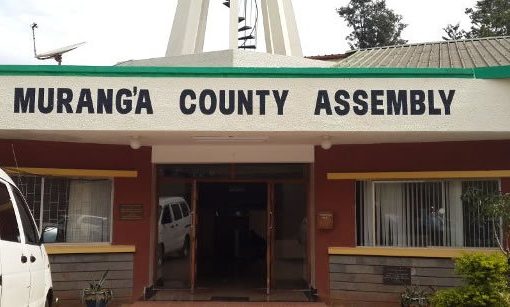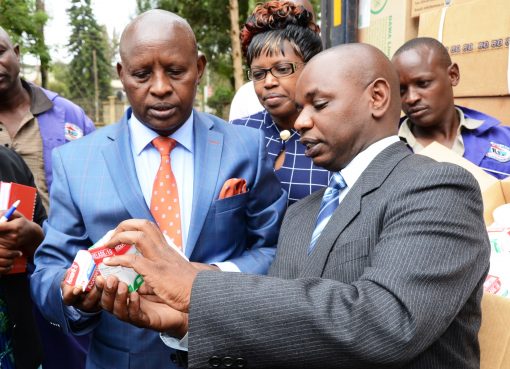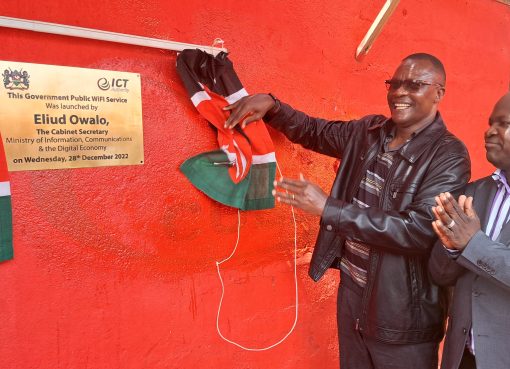The National Irrigation Authority (NIA) is working on modalities to increase the acreage under rice production in the country by at least 20,000 acres.
The authority’s Chief Operations Officer (COO) Joel Tanui said the move was to bridge the consumption deficit of rice in the country that rose to 600,000 metric tons against the 300,000 metric tons produced annually.
He decried the the Country was compelled to import at least 80 percent of rice to fill the huge shortfall in production and was working with stakeholders in the sub sector to developing strategies to increase production by introducing hybrid varieties.
“Our major responsibility is to ensure that farmers are producing enough maize and rice to feed Kenyans. This year alone, we have a target of expanding the area under irrigation specifically for rice by 20,000 acres,” he said.
According to the NIA, 650,000 acres are currently under irrigation in Kenya, with 200,000 under rice production.
“In the five-year plan we want to put another 100,000 acres under rice production so that we can bridge the deficit in terms of rice consumption in the country. In all the irrigation schemes, the authority is ensuring that the farmer produces rice at the least cost possible,” Tanui said.
This, he explained, will be done by making sure that the operations are at a minimum cost.’ We want to ensure farmers are able to offload their rice or maize to the market at an affordable price for the Kenyan people,” he said.
Tanui mentioned that the authority is working towards expansion and rehabilitation of existing irrigation schemes, as well as promoting introduction of high yielding rice varieties that are climate smart like the one that Kenya Agricultural Livestock Research Organization (KALRO) together with the International Rice Research Institute (IRRI) have recently launched in the Hola Irrigation Scheme.

He said this is a milestone in ensuring increase in productivity and income of the farmer while at the same time addressing food and nutrition security.
“We are looking at it from three aspects as an authority and that is promoting new varieties, improving irrigation facilities so that we are efficient in our operations and reducing the cost of operations in the schemes. This will ultimately help the farmer be able to meet the market demand of supplying rice at an affordable price,” Tanui said.
Dr. Ruth Musila, a rice breeder from KALRO says they have adopted and are breeding climate smart high yielding rice varieties which are on trial in 26 locations distributed in Central, Western, Coastal region and Tana River.
“We have done this because in the Central, Western and Coastal region there is variation so we want to find out which of this new lines we are introducing is adaptable to these regions and which of these lines is preferred by famers so that when we are entering them into the National Performance Trials (NPTs) we do not make a mistake of entering what famers do not want or prefer but we have the best choice”, she said
Dr. Musila explained that farmers will only be able to adopt varieties that they identify with and that is high yielding varieties that mature early and also match the consumers’ preference which is long slender, aromatic, non-sticky and are also tasty.

Kenya has had a challenge in terms of low production but when it comes to consumption the deficit is as high as 89 percent more because smart varieties are needed to close the gap between the two.
Dr. Musila said the the country has a bright future when it comes to rice production because of the new varieties being bred and together in a project dubbed “seed equal” in collaboration with the IRRI where they have developed 9 new lines, 5 of them are drought tolerant 2 are saline tolerant and 2 others tolerant to flooding.
‘Komboka’ rice variety introduced in both Mwea and Bura rice irrigation schemes a while back is one of the varieties that is showing promise for farmers and has seen them harvesting between 38 to 50 bags per acre compared to the old Basmati rice which a farmer gets about 25 kgs per acre.
As of 2021 the annual production of rice in Kenya was about 180,000 tonnes and consumption is about 1.1 to 1.2 metric tonnes every year. The country imports from Asian countries and the neighbouring Tanzania which is self-sufficient in rice. Around 2018/2019 the per capita consumption of rice per year was reading 22.6 kg.
As a country, Kenya has prioritized rice as a food security crop from 2008. Among the cereal food crops, rice ranks third after maize and wheat.
By Wangari Ndirangu





